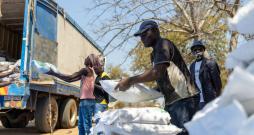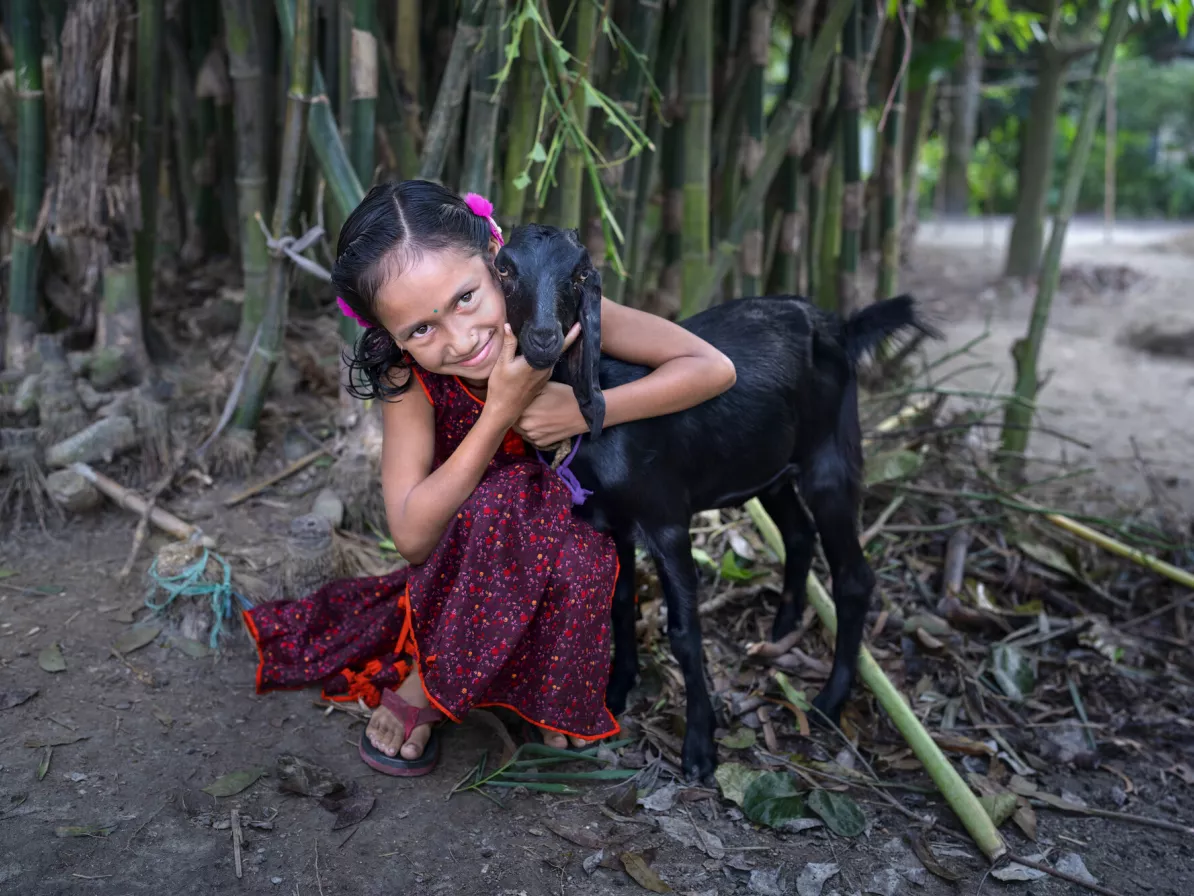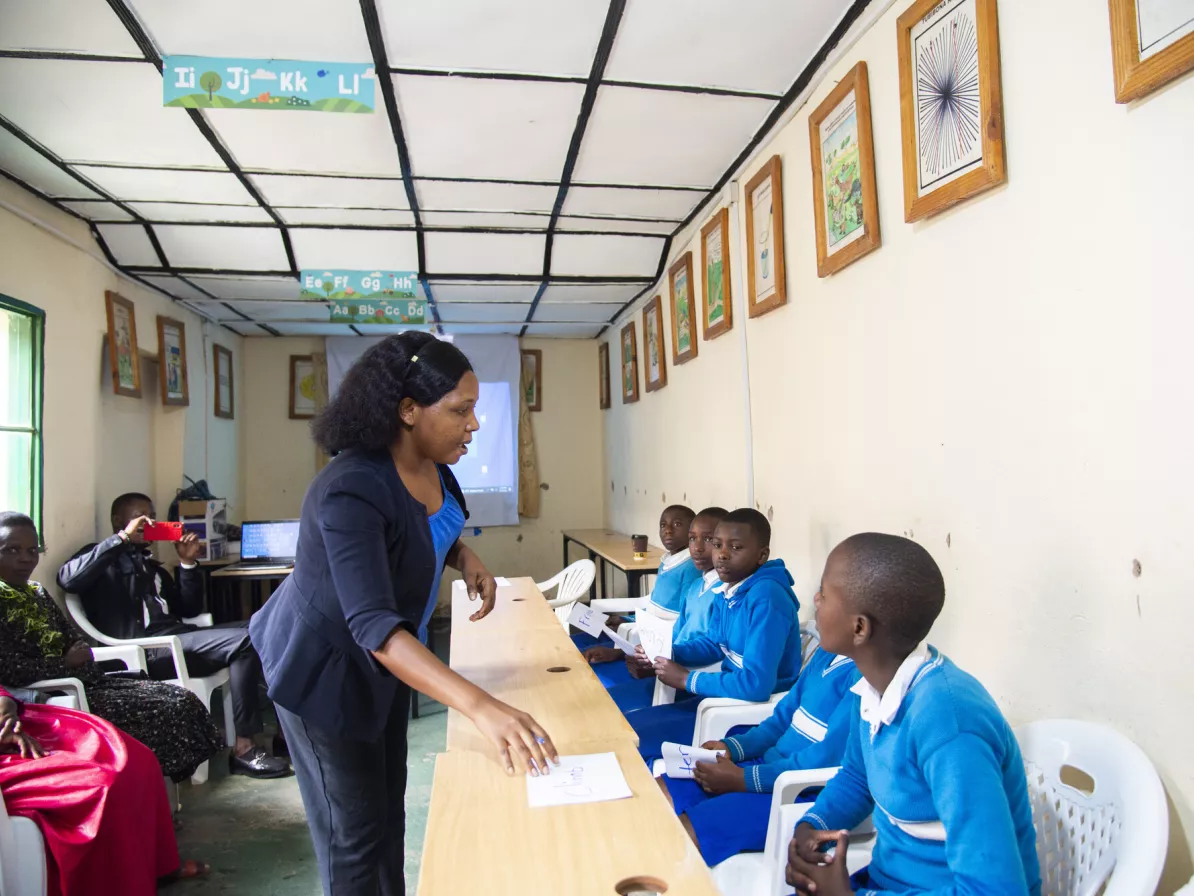Giving back through Christmas giving
Vivian Quiring, a faithful supporter with strong ties to MCC, reflects on how Christmas giving has provided younger generations of her family with an opportunity to learn about the needs of others and find satisfaction in giving back.
As an aunt to three nieces and three nephews, I’m also a great-aunt to five grandnieces and grandnephews. The latter are the grandchildren of my sister Elfriede and her husband, Lothar Schroeder.
Because I have lived in Toronto since 1978 and the rest of the family was in Winnipeg, Manitoba, it used to be difficult to know what Christmas gifts would be suitable for the youngest generation.
In 2008, when they were ages 4 to 12, my inquiries to their parents for gift ideas made it clear that wants and needs were minimal. When I suggested that perhaps, instead of a personal gift, I give each child a gift of money to donate to MCC projects of their choice, the reply was, “An excellent idea!” So since then, they’ve been selecting Christmas gifts from the MCC Christmas Giving Guide.
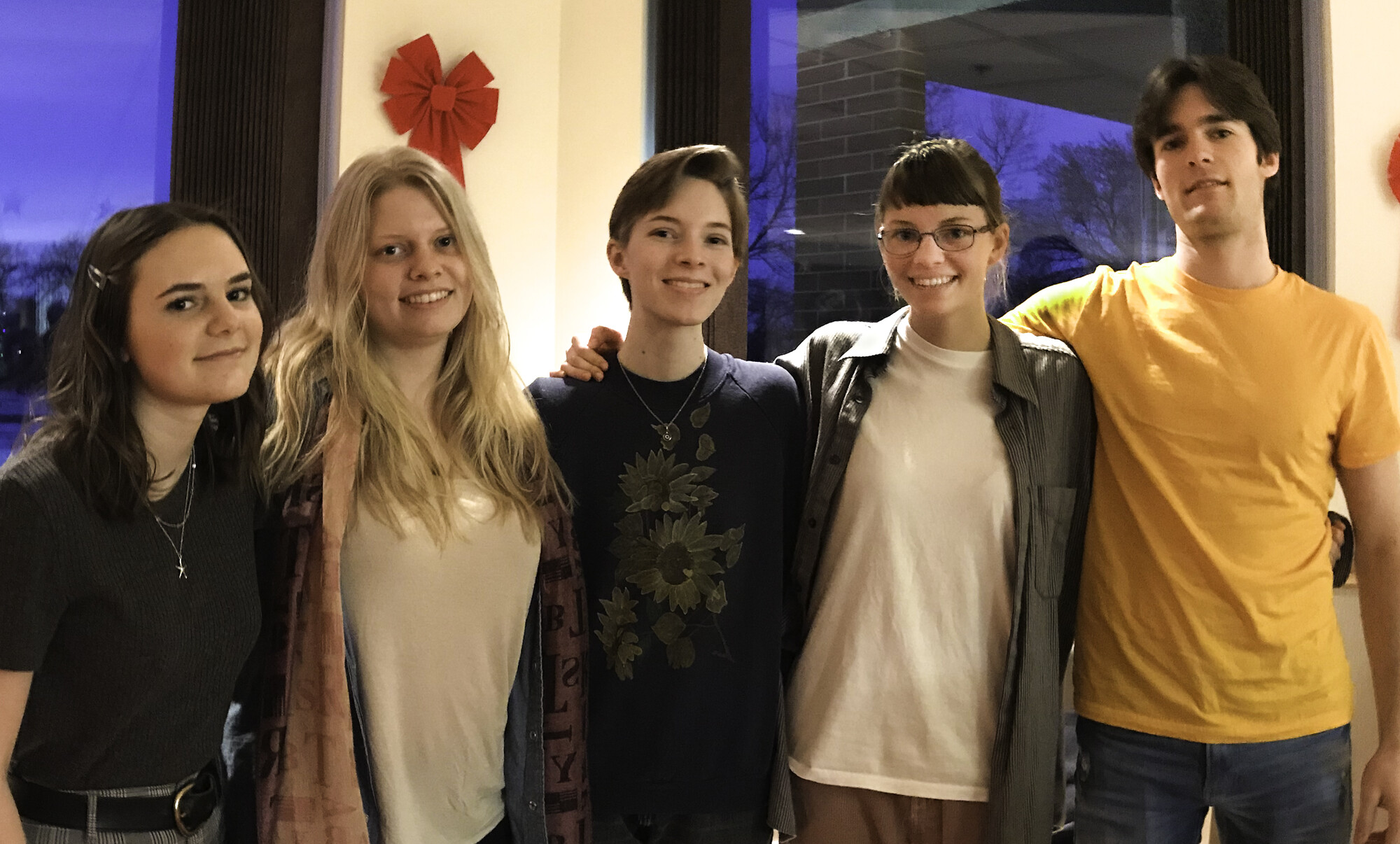
Generations of gratitude
My family has been connected to MCC since the organization’s beginning. Our parents were both born in southern Russia (present-day Ukraine). My father Henry Quiring was born in 1913 and lived in Khortitsa Colony. Mother Margaret Enns (born 1919) was from Molotschna Colony.
When the hard times came, with the revolution, Bolsheviks, government policies and droughts leading to starvation, American Mennonite Relief (AMR) was formed by many Mennonite churches and organizations. Representatives from AMR arrived in Russia in 1922, setting up soup kitchens in various villages to provide food basics as well as clothing and other essentials. The associated churches and organizations were the precursors for MCC.
We attended First Mennonite Church in Winnipeg. The people whose families had benefited from MCC in Russia felt gratitude and wanted to support MCC in its ongoing humanitarian services. Mom was involved in church women’s groups, and among other activities I recall her tying quilts for parcels to be distributed to various countries in need.
Elfriede has researched and compiled genealogy and ancestry information, collecting many photos, stories and details from as far back as 1660. Interest in our heritage was heightened in 2003, when I joined Elfriede, our cousin Eleanore (Rempel) Woollard and 150 other Mennonite “pilgrims” on a Mennonite Heritage Cruise on the Dnieper River in Ukraine. The ship stopped between Kyiv and Odesa at significant locations where our ancestors had lived.
Elfriede and I got to see the house where our father grew up before fleeing the region. We walked on the land our mother’s family once owned. Everyone had opportunities to visit old cemeteries, where the markers displayed many familiar names. Hearing other passengers share stories of the great hardships their families had faced brought the group closer together. This incredible adventure exposed us to much more of our heritage and the impact of organized Mennonite assistance.
Soon after that trip, we siblings revisited our Christmas traditions. We had always celebrated at our parents’ house and, after their passing, continued at siblings’ homes. The decision was made that our generation would stop exchanging gifts and instead collect money for a group donation to MCC.
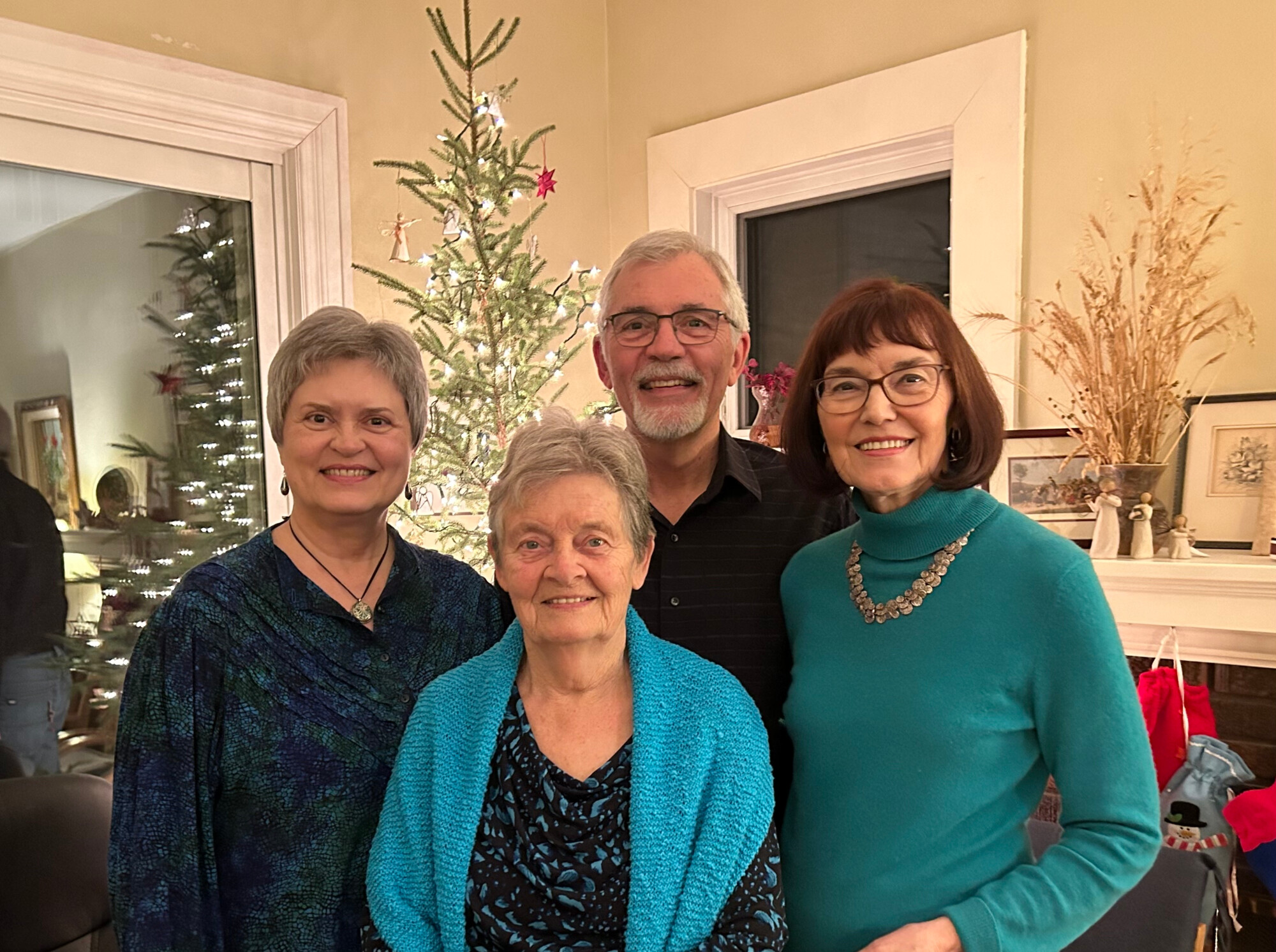
In 2008, I introduced the tradition of gifting my grandnieces and grandnephews (Emma, Kate, Andy, Nathan and Leah) with money for donation. The MCC Christmas Giving Guide made it easy and interesting for the children to select a variety of gifts and see exactly where the funds were going.
To help guide the children when they were younger, I created a worksheet of up to eight options from MCC’s Christmas Giving Guide. The suggestions were listed with a picture, project description and the cost, and they appreciated the variety of options they could consider. We read the descriptions together and discussed those which interested them. They were to agree upon three items. In the end, each child seemed satisfied with the group decisions they’d made.
As they’ve gotten older, I simply give them the guide and a “budget.” I ask one of them to be the leader each year, taking turns. The leader brings me the list once decided. I then make the donations on their behalf, in their names.
After the “thank you” emails arrive, I forward them to the group so they can read the messages of gratitude.
A legacy of generosity
Today, the five grandnieces and grandnephews are in their twenties. All treasure the annual tradition of coming together to choose gifts each Christmas. I recently asked each of them for their perspectives on this activity over the years.
“One of the things that makes it special,” said Kate, “is that every year we get to scurry off into our own little corner to make our choices. It’s fun because it’s something intentional we get to do together.”
There seem to be no disagreements, just discussion and then the majority has ruled. “Everyone has an opinion, a say in the decision,” Andy commented. “We each pick one thing and then decide as a group. Having options gives us good discussions.
Leah, the youngest, recalled, “When we first started, decisions were based on what we liked, and thought was fun. Animals (goats and chickens) were appealing, as well as helping children with schooling and supplies.” She was 4 that first year, and when a goat was selected as a gift, she was very excited! “Where are we going to keep the goat?” she asked, not quite understanding the process. The older children explained that they were buying the goat as a Christmas present for a family in need and how it would help them.
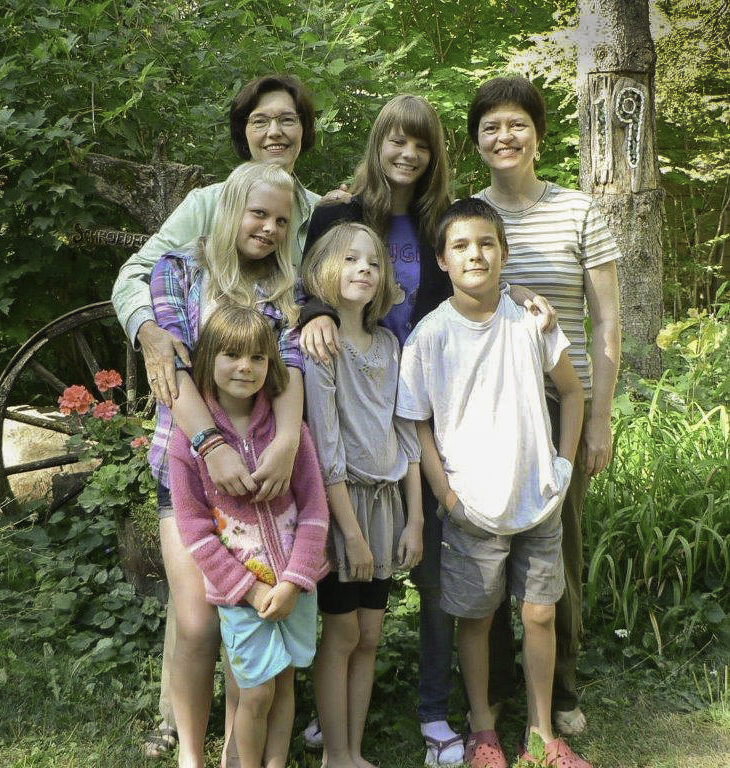
As the years went by, their choices broadened from children’s gifts to those that support a whole family or community. Nathan explained, “As I got older and had more awareness about the bigger world, more thought was added to the selection. The process of MCC gift giving every Christmas led me to think about the bigger picture, of countries and people who had great needs for things we take for granted.”
“All of us like this Christmas activity,” shared Emma, the eldest. “We have fun together making our choices. This has helped us learn more about the benefits of giving to charities as well. We’re happy that it will continue.”
My intention as their great-aunt has been to provide an opportunity to encourage donating and collaboration as they are asked to agree on the final decision. It has been gratifying for me to observe how their processes and preferences have changed as they’ve matured. I’m also delighted that they continue to enjoy and appreciate this tradition.
Give a gift of hope
Every donation makes a difference this holiday season.
